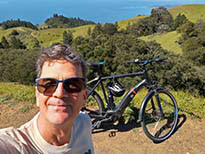Exploited by miners in the 19th Century, the awe-inspiring valleys of Mineral King came very close to becoming Disney-fied -- literally. Walt Disney wanted to build a ski resort up there. It was a very popular idea at the time, but the Sierra Club came out against it and won a victory in the US Supreme Court that was important not just for preserving the valley, but also for winning the right of citizens to sue the federal government to protect the common good.
"Just as important as the protection of a lovely valley was the precedent set through the lawsuit. The case confirmed the right of citizens to seek the help of the federal judiciary when any public resource -- land, air, water, wildlife -- came under threat. It established that Americans don't have to have an economic interest to have the legal right to get involved in protecting special places or stopping pollution; we all have an interest in keeping open space open, or in breathing clean air." --Tom Turner in High Country News
Back around 1990 I drove across the country on my way to spend the summer on an island called Manhattan. On the way I stopped in Bozeman, Montana, and got to talking with someone who said I really shouldn't miss seeing Glacier National Park. Unfortunately, I was too impecunious to be able to make the side trip.
There's nothing I could have done, but I do regret having to pass it up. I suspect now that whatever I could have seen back then is already considerably less amazing. Throw in the trophic cascades associated with the ecological benefits of the glaciers, and the bummer of losing them becomes even worse.
“We have just ten years to avert a major catastrophe that could send our entire planet into a tailspin involving extreme weather, floods, droughts, epidemics and killer heat waves beyond anything we have ever experienced.” – Al Gore in An Inconvenient Truth, 2006
Ten years after Gore's warning, atmospheric CO2 cracked 400 ppm. Unfortunately, it kinda seems like we won’t know with absolutely certainty whether we’re just in a wobble of turbulence, or an actual tailspin, until it’s too late to pull out of it.
Of course, for people who've already suffered losses on those five checkpoints, it already is too late. For the rest of us, we'll have a good clue that the end is near when insurance companies stop selling coverage for the five checkpoints.






























